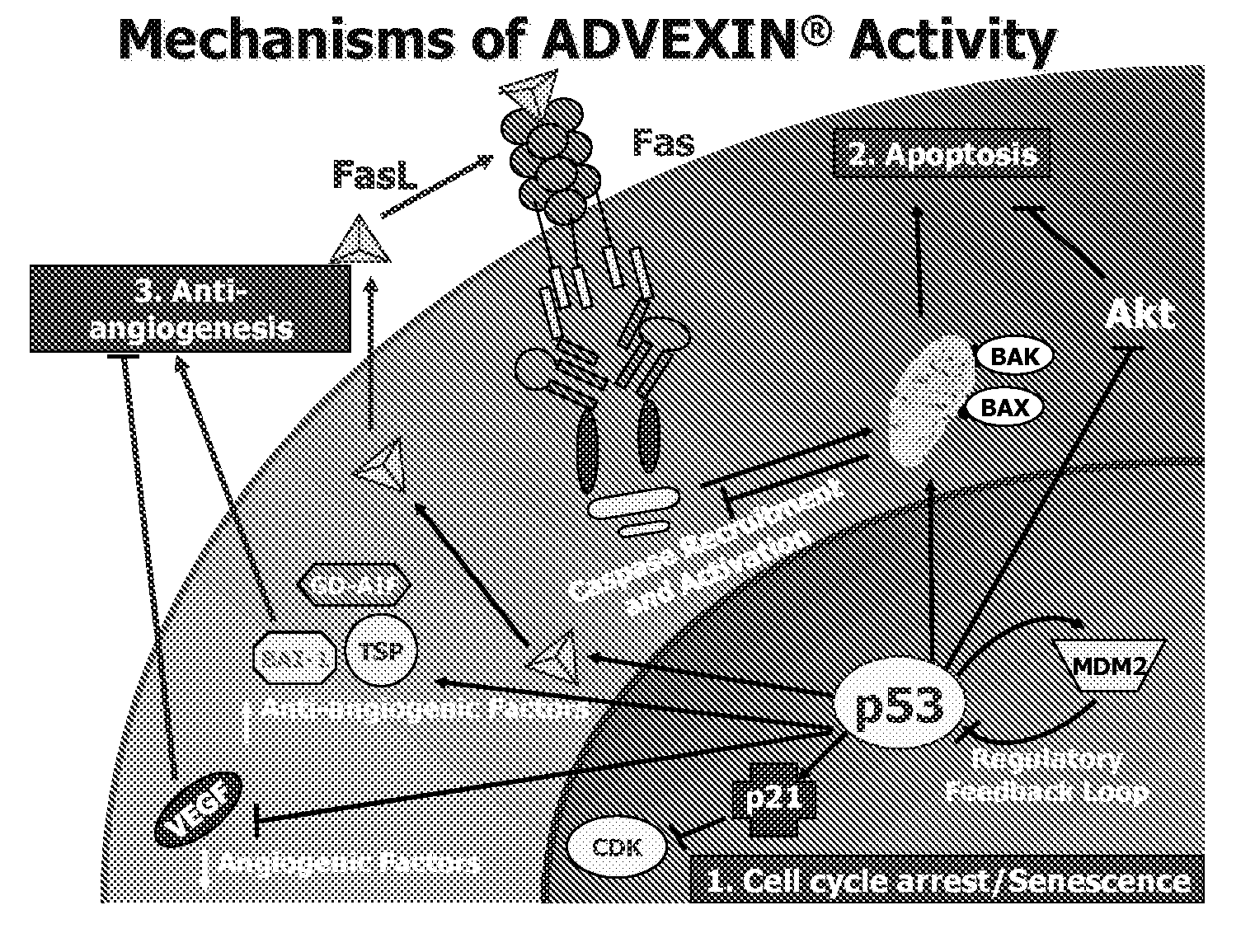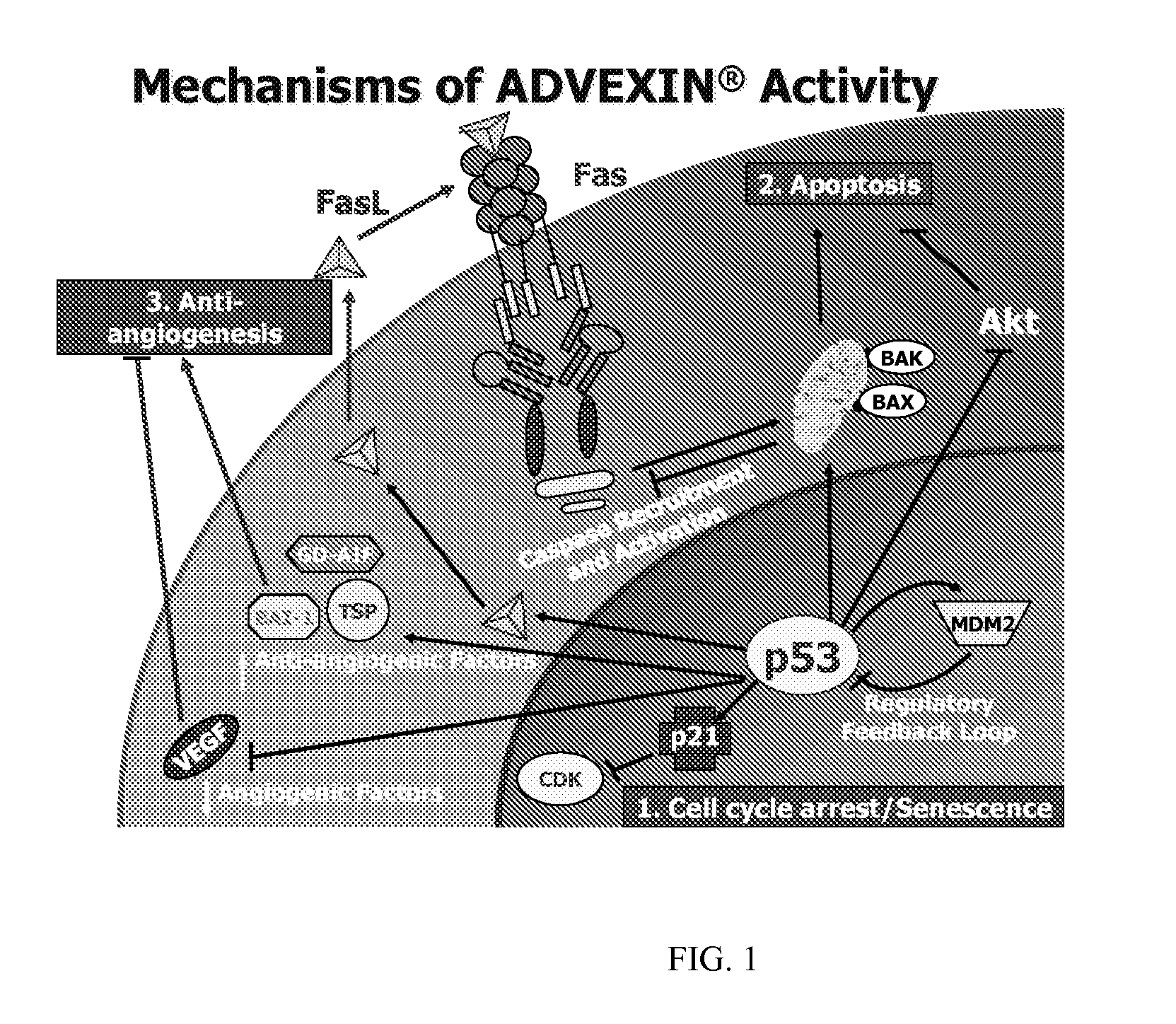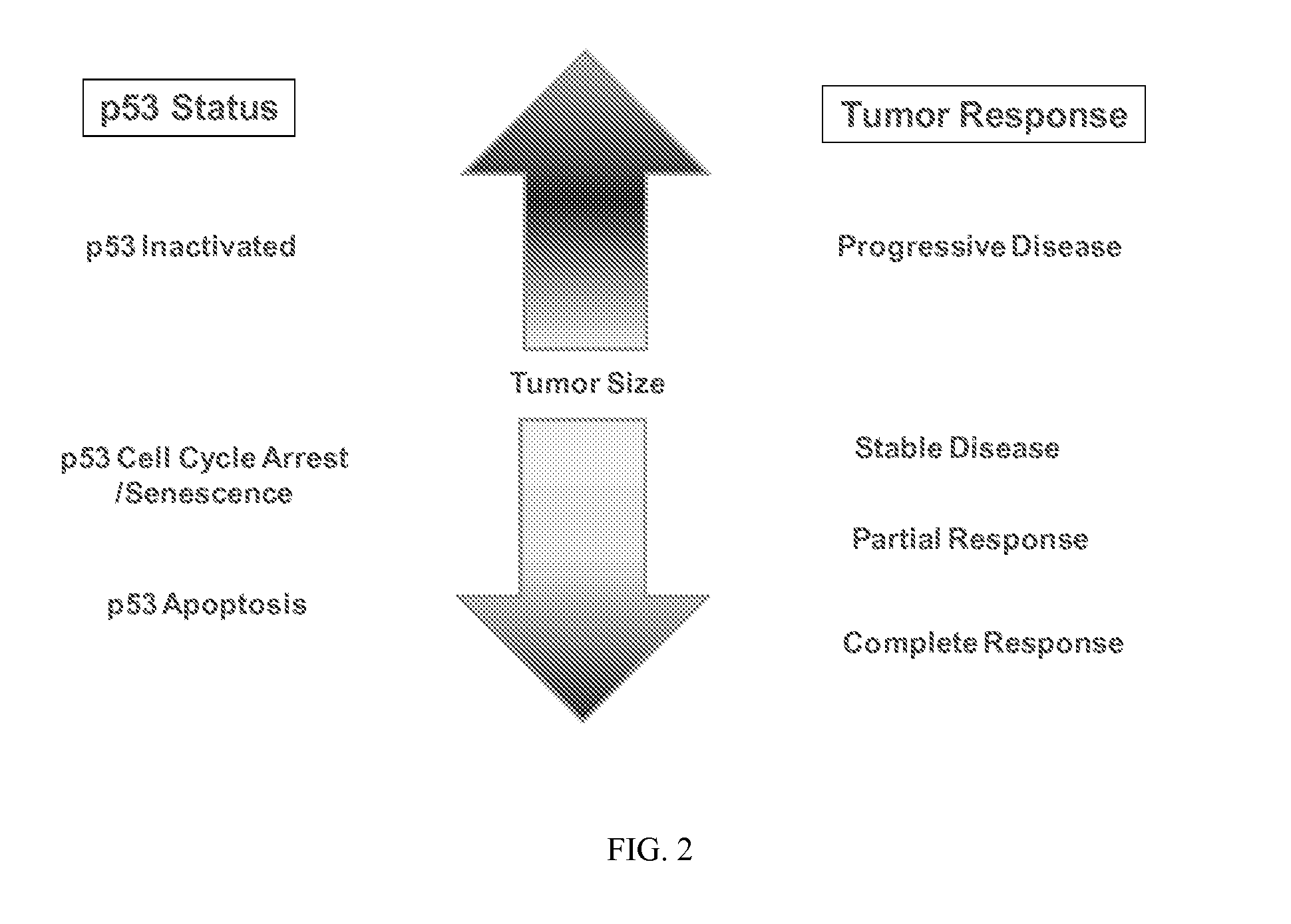P53 biomarkers
a biomarker and p53 technology, applied in the field of p53 biomarkers, can solve problems such as poor response to therapy, and achieve the effects of reducing tumor size or burden, reducing tumor-associated pain, and reducing tumor-associated pathology
- Summary
- Abstract
- Description
- Claims
- Application Information
AI Technical Summary
Benefits of technology
Problems solved by technology
Method used
Image
Examples
example 1
Advexin® Treatment Compares Favorably with Overall Survival Benefit Obtained with Approved Therapies
[0294]SCCHN patients having loco-regional recurrence invariably experience substantial tumor-related morbidity. The need for improved treatments to gain control of regional progression and preserve function in this patient population cannot be over-emphasized. In patients who have failed previous radiation and are deemed unresectable, chemotherapy is accepted as a standard treatment approach. The main goal of recurrent tumor treatment is the palliation of symptoms.
[0295]Several chemotherapy and targeted molecular monotherapy regimens have been used in the standard care of recurrent SCCHN with results summarized in comparison with Advexin® the table below. The median overall survivals for Advexin® and standard of care therapies are similar (approximately 5-6 months) and exceed historical median survival rates with no treatment (approximately 3-4 months). (Tarceva® U.S. Product Label, E...
example 2
Advexin® has a Superior Safety Profile Compared to Standard Therapies
[0296]The safety data compiled from thousands of administrations in over 400 patients demonstrate that Advexin® is a very well tolerated anti-cancer treatment and most adverse events are local in nature, self-limiting, and / or amenable to supportive care treatment. The side-effect profile is different from that of systemic chemotherapies and monoclonal antibody treatments for which the adverse events often can be dose-limiting and could potentially develop into more life-threatening sequelae than the local, and often self-limiting events observed with Advexin® therapy. Advexin® was proven to be safe in both males and females and across a wide age range of doses. No clinically significant differences in the Advexin® adverse event profile were noted for gender or age.
[0297]The Advexin®-related serious adverse event rate was very low. For SCCHN patients treated with Advexin®, the most frequently reported adverse event ...
example 3
Advexin® Responders have Statistically Significant Increased Survival in Recurrent SCCHN Patients Refractory to Approved Treatments
[0302]Tumor Growth Control Response is Correlated with Statistically Significant Increased Survival Following Advexin® Therapy. Concordant with the findings of Lara et al. (2008), Advexin® therapy in the ITT populations of both T301 and T201 pivotal trials resulted in highly significant increased survival for patients with tumor growth control (CR+PR+SD) responses compared to non-responders in recurrent SCCHN patients who were refractory to other therapies.
[0303]In the Advexin® Phase 3 pivotal trial T301, there was a statistically significant increase in survival for patients with TGC responses compared to non-responders (median survival TGC responders 7.6 months vs. non-responders 2.9 months, p=0.0002). These results are depicted in the Kaplan-Meier analysis in FIG. 5.
[0304]Similar results were observed in the Advexin® pivotal trial T201 and there was a...
PUM
| Property | Measurement | Unit |
|---|---|---|
| temperature | aaaaa | aaaaa |
| temperature | aaaaa | aaaaa |
| pore size | aaaaa | aaaaa |
Abstract
Description
Claims
Application Information
 Login to View More
Login to View More - R&D
- Intellectual Property
- Life Sciences
- Materials
- Tech Scout
- Unparalleled Data Quality
- Higher Quality Content
- 60% Fewer Hallucinations
Browse by: Latest US Patents, China's latest patents, Technical Efficacy Thesaurus, Application Domain, Technology Topic, Popular Technical Reports.
© 2025 PatSnap. All rights reserved.Legal|Privacy policy|Modern Slavery Act Transparency Statement|Sitemap|About US| Contact US: help@patsnap.com



